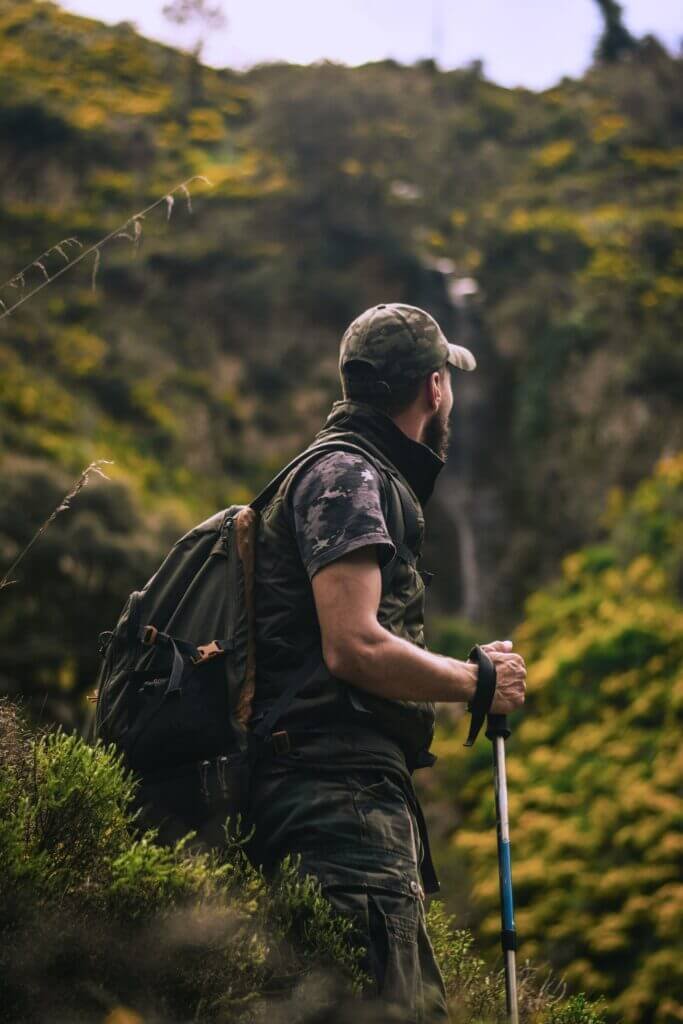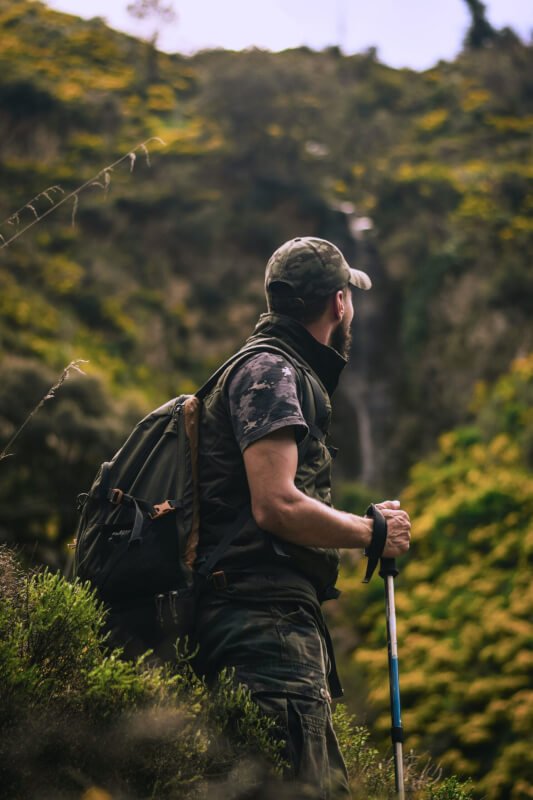So, you’ve decided to embark on a camping adventure. But now the pressing question arises – how do you set up your tent and campsite effectively? Don’t fret, because in this article, we’ll guide you through the process step by step. From choosing the perfect spot for your tent, to assembling it with ease, and creating a functional campsite that enhances your outdoor experience – we’ve got you covered. Get ready to become a camping pro in no time!

Choosing the Right Campsite
When it comes to camping, choosing the right campsite is crucial for a successful and enjoyable trip. Before you start your adventure, consider the terrain and surroundings of the campsite. Look for a location that aligns with your preferences – whether it’s a secluded spot surrounded by tall trees or a picturesque area near a lake. Take note of any potential hazards in the area such as uneven ground, overhanging branches, or areas prone to flooding.
Additionally, it’s important to consider the proximity to water sources and restroom facilities. Access to clean water is essential for cooking, drinking, and cleaning. While some campgrounds have designated water sources and restroom facilities, others may require you to bring your own water or use nature as your restroom. Evaluate your personal needs and preferences when selecting a campsite.
Gathering the Necessary Equipment
Before you embark on your camping trip, make sure you have all the necessary equipment to set up a comfortable and functional campsite. Here’s a checklist to help you gather everything you need:
- A tent: Look for a tent that suits your needs and accommodates the number of people camping with you.
- Groundsheet or footprint: This protects the bottom of your tent from moisture and prevents wear and tear.
- Stakes or pegs: These are crucial for securing your tent to the ground.
- Mallet or hammer: This tool will come in handy for hammering the stakes into the ground.
- Tent poles and rainfly: These components provide structure and protect your tent from rain.
- Sleeping bags and bedding: Ensure you have warm and comfortable sleeping arrangements.
- Camp chairs and tables: These provide a comfortable space for relaxing and dining.
- Cooking equipment and utensils: Depending on your camping style, pack a stove, pans, cutlery, and any necessary cookware.
- Lighting options: Headlamps, lanterns, and flashlights can help illuminate your campsite at night.
- Personal items and clothing: Remember to pack toiletries, clothes suitable for the weather, and any other personal items you may need.

Preparing the Campsite
Once you arrive at your chosen campsite, it’s essential to prepare the area before setting up your tent. Start by clearing the area of any debris, such as loose branches, rocks, or litter. This will create a safe and clean environment for you and your fellow campers.
Next, remove any rocks or sticks that may cause discomfort or damage to the floor of your tent. It’s important to have a level ground to ensure a comfortable sleeping surface. If the ground is uneven, you can use a shovel or your feet to level it out.
Clear the tent footprint by removing rocks, twigs, and other objects that could damage the tent floor. This will help extend the lifespan of your tent and prevent any unwanted surprises during your trip.
After clearing the area and ensuring a level ground, it’s time to set up your cooking and dining area. Choose a spot close to your tent but away from any potential hazards. This will make meal preparation and dining more convenient, ensuring you can enjoy delicious campfire-cooked meals without any worries.
If permitted, designate a fire pit for cooking or warmth. Make sure it’s away from trees, tents, and other flammable objects. Finally, organize your camping gear and personal items in a way that makes them easily accessible throughout your trip.
Setting Up the Tent
Now that you’ve prepared the campsite, it’s time to set up your tent. Follow these steps to ensure a successful tent setup:
Lay out the tent footprint: Place the groundsheet or footprint in the desired location, aligning it with the cleared and leveled ground.
Unpack and arrange the tent components: Open the tent bag and carefully lay out all the tent components, including the body, rainfly, and poles.
Attach the rainfly (if necessary): Depending on the weather conditions and your tent design, you may need to attach the rainfly to provide extra protection against rain.
Assemble the tent poles: Connect the tent poles according to the instructions provided with your tent. Make sure they are fully extended and secure.
Slide the poles into the appropriate sleeves or clips: Insert the assembled poles into the designated sleeves or clips on the tent body. This will give your tent its structure and shape.
Insert stakes or pegs into the tent corners: Secure the corners of the tent by inserting stakes or pegs into the loops or grommets. Use a mallet or hammer to drive them into the ground for added stability.
Secure the rainfly and guy lines (if applicable): If your tent has guy lines, attach them to the rainfly and secure them to nearby trees or with stakes. This will help stabilize your tent in windy conditions.
Adjust the tension of the tent: Ensure the tent is taut but not overly stretched. Adjust the tension of the poles and guy lines as needed to create a stable and secure structure.
By carefully following these steps, you’ll have your tent set up and ready for a cozy night’s sleep in no time!

Adding Comfort and Accessibility
Setting up a campsite is not just about shelter; it’s about creating a comfortable and efficient space for your camping experience. Consider the following tips to add comfort and accessibility to your campsite:
Set up camp chairs and tables: Having a dedicated seating area allows you to relax and enjoy meals comfortably. Portable folding chairs and tables are ideal for this purpose.
Arrange sleeping bags and bedding: Organize your sleeping area by laying out your sleeping bags, pillows, and any additional bedding to create a cozy and inviting space.
Create designated areas for personal items: Keep your personal belongings organized by designating specific areas for items such as clothes, toiletries, and camping gear. This will help maintain order and ensure everything is easily accessible.
Establish a cooking and food storage area: Set up a designated space for your cooking equipment and food storage. This can be a table or a portable cooking station, ensuring your meals are prepared efficiently and safely.
Install lighting options: Illuminate your campsite by hanging lanterns or using headlamps and flashlights. This will provide adequate lighting during the evening hours and help you navigate around the campsite.
Set up a restroom area (if necessary): If there are no restroom facilities nearby, set up a portable toilet or establish a designated area for bathroom needs. Make sure to follow proper waste disposal practices and respect the environment.
Ensure easy access to water sources: Place water containers or bottles near your cooking and dining area for easy access. Consider using a water purification system if necessary to ensure safe drinking water.
By incorporating these elements into your campsite setup, you’ll create a comfortable and accessible environment that enhances your overall camping experience.
Campsite Safety Measures
While camping is an exciting and enjoyable activity, it’s essential to prioritize safety. Follow these campsite safety measures to ensure a safe and worry-free camping experience:
Follow fire safety guidelines: If fires are allowed at your campsite, educate yourself about fire regulations and safety precautions. Make sure to only use designated fire pits or areas and never leave a fire unattended.
Store food properly to prevent attracting wildlife: Keep your food in sealed containers or coolers to prevent attracting animals. Properly dispose of food waste and store it away from your camping area. Follow any bear-safe guidelines if you’re camping in bear country.
Keep a first aid kit readily available: Accidents can happen, so it’s crucial to have a well-stocked first aid kit on hand. Include items such as bandages, antiseptic cream, pain relievers, and any necessary medications for your group.
Protect yourself from insects and pests: Bring insect repellent, citronella candles, or mosquito coils to keep bugs at bay. Consider using mesh netting around your sleeping area to create a bug-free zone.
Secure valuable items and electronics: Keep valuable items, such as wallets, phones, and cameras, secured in your tent or vehicle when not in use. It’s also a good idea to have a lock for your tent to deter any potential theft.
Be cautious of poisonous plants or animals: Familiarize yourself with the local flora and fauna to identify any potentially harmful species. Avoid touching or consuming unknown plants and be cautious of snakes or other dangerous wildlife.
Maintain proper hygiene and cleanliness: Follow good hygiene practices to prevent the spread of germs and avoid illness. Wash your hands regularly, use hand sanitizer, and dispose of waste properly.
By implementing these safety measures, you’ll create a secure environment for yourself and your fellow campers.
Campsite Maintenance and Cleanup
Once you’ve enjoyed a fantastic camping experience, it’s important to practice responsible campsite maintenance and cleanup. Here are some key steps to follow:
Regularly check and maintain the tent: Inspect your tent for any tears, holes, or damage. Address these issues promptly to ensure the longevity of your tent. Clean the tent as needed, following the manufacturer’s instructions.
Clean and organize cooking and food storage areas: Thoroughly clean your cooking equipment, utensils, and food storage containers. Dispose of any leftover food waste in a proper manner. Keep these areas tidy to prevent attracting pests.
Dispose of waste and garbage properly: Pack out what you pack in. Make sure to properly dispose of all your waste and garbage, keeping the campsite clean and free of litter. Leave no trace behind.
Leave the campsite as you found it (or better): Show respect to the environment and future campers by leaving the campsite in the same condition, if not better, than when you arrived. Remove any traces of your presence and ensure the area is clean and well-maintained.
Follow Leave No Trace principles: Familiarize yourself with Leave No Trace principles and aim to minimize your impact on the environment. These principles include leaving natural and cultural artifacts undisturbed, staying on designated trails, and minimizing campfire impact.
Properly store and pack up equipment: Pack your camping gear and equipment mindfully, ensuring it is properly organized and secure. This will make it easier for future trips and extend the lifespan of your camping gear.
By following these maintenance and cleanup practices, you’ll leave the campsite in a pristine condition and promote a sustainable camping culture.
Troubleshooting and Common Challenges
Despite careful planning, camping can sometimes present challenges. Here are some common issues you may encounter and how to address them:
Dealing with inclement weather: Be prepared for unpredictable weather conditions by packing appropriate clothing, tarps, and extra stakes to secure your tent. Ensure your tent is properly waterproofed and consider having backup activities planned in case of severe weather.
Identifying and fixing tent leaks: If you experience leaks in your tent during rain, identify the source of the leak and apply temporary patches or sealant as needed. Address the issue more thoroughly after your camping trip.
Resolving poles or stake issues: If tent poles or stakes become damaged or lost, use duct tape, paracord, or natural materials to improvise temporary solutions. Always carry a repair kit with spare parts to address these issues more effectively.
Managing bugs and pests effectively: Despite your best efforts, bugs and pests can sometimes be persistent. Consider using natural repellents, mosquito nets, or bug zappers to minimize their presence. Utilize proper food storage practices to avoid attracting unwanted critters.
Handling noisy or disruptive neighbors: Sometimes, camping neighbors can be loud or disruptive. Politely address any concerns with your neighbors or campground staff if necessary. Earplugs or background noise from nature can help mitigate the disturbance.
Addressing minor injuries or ailments: Minor injuries or ailments can occur during camping trips. Be prepared with a well-stocked first aid kit and basic medical knowledge. Treat minor cuts or scrapes promptly and seek medical assistance for more serious injuries or illnesses.
Dealing with tent setup frustrations: Tent setup can be challenging, especially if you’re camping alone or encountering unfamiliar equipment. Practice setting up your tent before your trip to familiarize yourself with the process. Alternatively, seek assistance from experienced campers or campground staff.
By being prepared for these common challenges and approaching them with a positive mindset, you’ll be able to overcome any obstacles and continue enjoying your camping adventure.
Tips for an Enjoyable Camping Experience
To make the most of your camping trip, consider these additional tips:
Research and plan ahead: Familiarize yourself with the campsite rules, regulations, and amenities. Research nearby activities, attractions, and hiking trails to make the most of your time in the area.
Pack wisely and efficiently: Prioritize lightweight and multipurpose gear to maximize space and minimize carrying weight. Pack essentials and avoid overpacking, focusing on items that enhance your camping experience.
Set up a comfortable sleeping area: Ensure your sleeping area is cozy and comfortable by using sleeping pads or inflatable mattresses. Bring extra blankets or sleeping bags to adapt to changing weather conditions.
Prepare delicious meals and snacks: Embrace outdoor cooking by planning and prepping delicious meals and snacks. Consider easy-to-cook options or prepare meals in advance to simplify cooking at the campsite.
Engage in outdoor activities and exploration: Take advantage of the natural surroundings and engage in activities such as hiking, fishing, swimming, or wildlife watching. Immerse yourself in the beauty of nature and create lasting memories.
Connect with fellow campers: Camping often provides an opportunity to meet new people and make connections. Engage with fellow campers, exchange stories, and share experiences. You may even learn valuable tips and recommendations for future trips.
Disconnect and enjoy the tranquility: Use camping as a chance to disconnect from technology and embrace the peace and tranquility of nature. Take a break from screens and enjoy being present in the moment.
Appreciate the beauty of nature: Take the time to appreciate the natural environment around you. Observe the wildlife, marvel at the stars, and soak in the awe-inspiring landscapes. Leave room for awe and wonder.
By following these tips, you’ll enhance your camping experience and create lasting memories in the great outdoors.
Conclusion
In conclusion, setting up a tent and campsite effectively is essential for a successful and enjoyable camping trip. By considering the terrain, checking for potential hazards, and selecting a level ground, you’ll create a safe and comfortable environment. Gathering the necessary equipment, preparing the campsite, and setting up the tent correctly are paramount for a smooth camping experience. Adding comfort and accessibility, prioritizing safety, maintaining and cleaning the campsite, and troubleshooting common challenges will contribute to a positive camping adventure. With proper planning and responsible practices, you can maximize your enjoyment of nature and look forward to many more camping adventures in the future. Happy camping!


